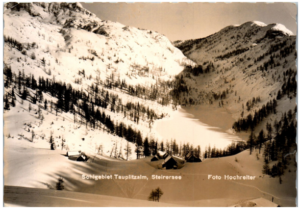Archaeologists Find Hidden Rooms in Pyramid of Egyptian Pharaoh Sahure

The pyramid complex of Sahure was built in the 26th to 25th century BCE for the Egyptian pharaoh Sahure.
It introduced a period of pyramid building by Sahure’s successors at Abusir, on a location earlier used by Userkaf, founder of the Fifth Dynasty, for his Sun temple.
The pyramid of Sahure was first investigated by the British egyptologist John Perring, who was the only one who was able to break off and clean the entrance as well as the descending access passage.
The burial chamber was very badly damaged by the stonecutters, and it is not even clear if it was comprised of one or two rooms.
Perring found a single fragment of basalt, thinking that it belonged to the king’s sarcophagus.
Interestingly, in the northeastern part of the eastern wall of the burial chamber, Perring discovered a low passageway.
He suggested that this could lead to a magazine area, however, the corridor was full of rubble or waste and he did not attempt to enter it.
Due to the bad state of preservation in the interior compartment of the pyramid, precise reconstruction of the substructure’s plan was impossible.
“The conservation and restoration project inside Sahure’s pyramid, initiated in 2019 and supported by the Antiquities Endowment Fund (AEF) of the American Research Center in Egypt (ARCE), aimed to safeguard the substructure of Sahure’s pyramid,” said Julius-Maximilians-Universität of Würzburg egyptologist Mohamed Ismail Khaled and his colleagues.
“Our efforts focused on cleaning the interior rooms, stabilizing the pyramid from inside, and preventing further collapse.”
“In the process, we succeeded in securing the pyramid’s burial chambers, which had previously been inaccessible.”
One of the newly-discovered storage rooms in the pyramid of Sahure at Abusir, Egypt. Image credit: Mohamed Khaled / Julius-Maximilians-Universität of Würzburg.
During the restoration work, they identified the original dimensions and were able to uncover the floor plan of the antechamber, which had deteriorated over time. Consequently, the destroyed walls were replaced with new retaining walls.
“The eastern wall of the antechamber was badly damaged, and only the northeast corner and about 30 cm of the eastern wall were still visible,” the archaeologists said.
“Traces of a low passageway that Perring had already noticed during an excavation in 1836 continued to be excavated.”
“Perring had mentioned that this passage had been full of debris and rubbish and had been impassable due to decay.”
“He suspected that it might have led to storage rooms. However, during further exploration of the pyramid by Ludwig Borchardt in 1907, these assumptions were called into question — other experts joined his opinion.”
“All the more surprising was our discovery of the traces of a passage. Thereby proving that the observations made during Perring’s exploration were correct,” they said.
“The work was continued, and the passage was uncovered. Thus, eight storerooms have been discovered so far.”
“Although the northern and southern parts of these magazines, especially the ceiling and the original floor, are badly damaged, remnants of the original walls and parts of the floor can still be seen.”
Source : SCI News





